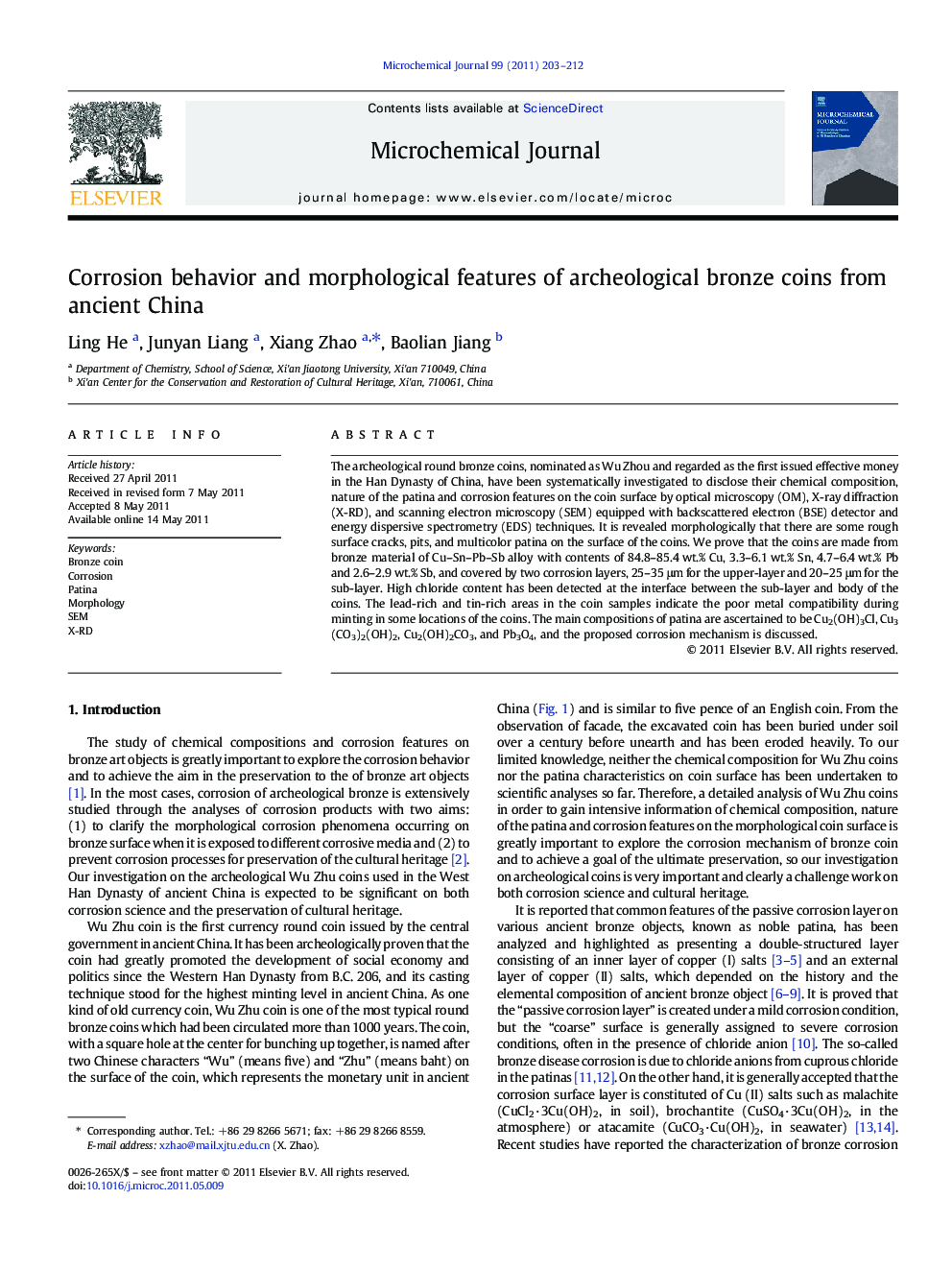| Article ID | Journal | Published Year | Pages | File Type |
|---|---|---|---|---|
| 10556834 | Microchemical Journal | 2011 | 10 Pages |
Abstract
The archeological round bronze coins, nominated as Wu Zhou and regarded as the first issued effective money in the Han Dynasty of China, have been systematically investigated to disclose their chemical composition, nature of the patina and corrosion features on the coin surface by optical microscopy (OM), X-ray diffraction (X-RD), and scanning electron microscopy (SEM) equipped with backscattered electron (BSE) detector and energy dispersive spectrometry (EDS) techniques. It is revealed morphologically that there are some rough surface cracks, pits, and multicolor patina on the surface of the coins. We prove that the coins are made from bronze material of Cu-Sn-Pb-Sb alloy with contents of 84.8-85.4 wt.% Cu, 3.3-6.1 wt.% Sn, 4.7-6.4 wt.% Pb and 2.6-2.9 wt.% Sb, and covered by two corrosion layers, 25-35 μm for the upper-layer and 20-25 μm for the sub-layer. High chloride content has been detected at the interface between the sub-layer and body of the coins. The lead-rich and tin-rich areas in the coin samples indicate the poor metal compatibility during minting in some locations of the coins. The main compositions of patina are ascertained to be Cu2(OH)3Cl, Cu3(CO3)2(OH)2, Cu2(OH)2CO3, and Pb3O4, and the proposed corrosion mechanism is discussed.
Keywords
Related Topics
Physical Sciences and Engineering
Chemistry
Analytical Chemistry
Authors
Ling He, Junyan Liang, Xiang Zhao, Baolian Jiang,
